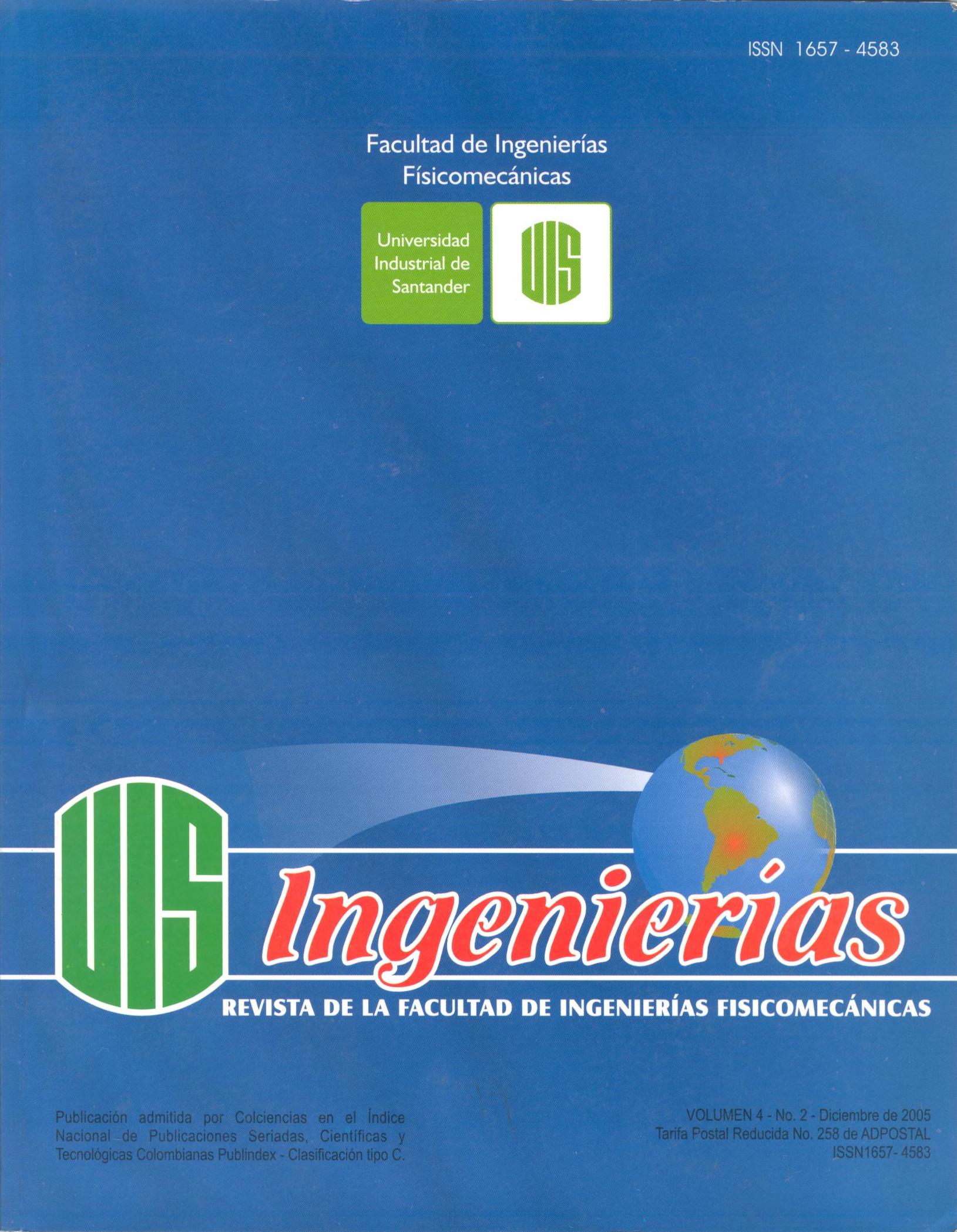Publicado 2005-12-01
Palabras clave
- CSCL,
- ejercitación colaborativa,
- programación estructurada,
- educación en línea,
- ambientes de apoyo a la enseñanza y aprendizaje
Cómo citar
Resumen
Los conceptos y las habilidades relacionadas con las construcciones fundamentales de programación (variables, tipos, expresiones, asignación, entrada y salida simple y estructuras de control condicional y de iteración) son un componente clave en la formación de los futuros ingenieros de sistemas. Teniendo en cuenta que en muchas universidades colombianas, los resultados obtenidos en las asignaturas que manejan estos conceptos no son los adecuados, se estableció un proceso de aprendizaje basado en la ejercitación, con el fin de aumentar el nivel académico de los estudiantes, disminuir la deserción, fomentar la colaboración y afianzar mejor los conocimientos y las habilidades mencionadas. Este artículo presenta un método de ejercitación colaborativo que permite construir un algoritmo en grupos de dos a cuatro estudiantes; además describe una herramienta computacional que soporta el método, facilitando la interacción, planeación, ejecución, monitoreo y análisis de los resultados en cada una de las actividades de ejercitación. Finalmente, se describe una experimentación con resultados favorables. Para la definición del método se analizaron las características más importantes de los métodos de aprendizaje colaborativo que permiten solucionar problemas en distintas disciplinas (libres de contenido), algunos métodos no libres de contenido y el cumplimiento de los cinco elementos básicos del definidos por Johnson & Johnson, entre otros.
Descargas
Referencias
DÍAZ, R., y GARZÓN, M. Informe de la Encuesta aplicada a los estudiantes de la FIET, sobre el curso
de Introducción a la Informática e Informática 1. Proyecto de grado titulado: <<Diseño y desarrollo de
un curso en linea de Introducción a la Informática utilizando las Tecnologlas de la Informacióro>. 2002.
JOHNSON,R.T. andJOHNSON, DW. <<AnOverview of Cooperative Leaming.» Creativity and
Collaborative Leaming Eds. Jacqneline Thousand, Villa, R. and Nevin, A. Baltimore, Paul H Brookes
Publishing.1994.
HENLEY, J. "Cooperative Learning: It's In There". http://tiger. coe .míssouri. edu/-vlib/Joan's.stuff/
Joan's.Page.html.
COLLAZOS, C., GUERRERO, L., PINO, 1. and OCHOA, S. "Evaluaring Collaborative Learuing
Pracesses". Praceedings of the 8th Interoational Workshop on Groupware (CRIWG'2002), Springer
VerlagLNCS, 2440, Heidelberg, Germany, September, 2002.
SOLLER, A., GOODMAN, B., LINTON, F. and GAIMARI, R. "Promoting effective peerinteraction .
in an Intelligent Collaborative Learoing System". In Proceedings of 4th Interoational Conference on
Intelligent Tutoring System. San Antonio, TX. 186-195.1998.
SOLLER, A., LESGOLD, A., UNTON, F. and GOODMAN, B. "What makes peer interaction effective? Modeling effective communication in an intelligent CSCL".AmericanAssociation for Artificial Intelligence. www.aai.org. 1999.
DILLENBOURG, P., BAKER, M., BLAYE, A. & O'MALLEY, C. "The evolution of Research on Collaborative Learning". In Spada, H. and Reimann, P. (Eds.) Learning in Humans andMachines. Elsevier.1996.
JOHNSON, R.T. and JOHNSON, D.W. "Handbook of Research for Educational Conununications and
Techno10gy". Edited by David H. Jonassen. 1997.
JOHNSON, D.W. and JOHNSON, R.T. "Aprender Juntos y Solos". Aprendizaje Cooperativo,
Competitivo e Individualista. (Ira Ed.).Aique Grupo Editor S.A. 1999.
PANITZ, T. "Collaborative versus Cooperative Learning - A comparison ofthe two concepts which
will help us understand the underlying nature of interctive leraning". Cooperative Learning and
College Teaching, V8, No. 2, Winter 1997. Ver Ted's Cooperative Learning e-book en http://home.capecod.netHpanitz/ebooklcontents.html.
SLAVIN, R.E. "Research For The Future: Research on Cooperative Learning and Achievement: Wbat
We Know, What We Need To Know». Contemporary Educational Psycho10gy, 21 (1),43-69. Center for
Research on tbe Education ofStudents Placed atRisk JoIma Hopkins University. October 1995.
McLAUGHLIN, C. and OLSON, a "Unblocking brainstorming through the use of a simple group
editor". Cognitive Science and Machine Intelligence Laboratory. University ofMichigan. ACM 0-89791-
543-7.1992.
GEHRINGER, E.F. "Strategies and mechanisrns for electronic peer review". Frontiers in Education.
Missouri. http://fie.engrng.pitt.edulfie2000/papers/1189.pdí. 2000.
GEHRINGER, E.F. "Buildingresourcesfor teaching computer architecture through electronic peer
review". Workshop on Computer Architecture Education. California, http://www4.ncsu.edu/-efg/
wcae/2003/submissions/gehringer.pdf.2003.
COLLAZOS, c., GUERRERO, L., PINO" STAHL,J. a and OCHOA, S. ''Using Gamesto Model and Evaluate
Collaborative Learning". ICLS, International Conference ofthe Learning Sciences, Santa Moniea,
CA -June 22-26,2004.
MILLIS, B.J. and COTTELL Jr, p.a "Cooperative learning for higher education facu1ty". American
Council on Education, Series on Higher Education. The Oryx Press, Phoenix,AZ. 1998.
OSBORN,A.F. "AppliedImagination" (Rev Ed.) New YorkScnbner.1957. [19] JOHNSON, D.W., JOHNSON, R.T. and SMITH, K.A. "Active learning: Cooperation in the college classroom". Edina, MN: Interaction BookCompany.
1991. 127
SLAVIN, R.E. "Cooperative learning: Theory, reserch, and practice (2nd ed.)". Boston: Allyu &
Bacon. 1995.
LYMNA, F. "The responsive classroom discussion." In Anderson, A. S. (Ed.), Mainstreaming Digest,
College Park, MD: University ofMaryland College of Education. 1981.
LOCHHEAD, J. and WHIMBEY, A. "Teaching analytical reasoning through thinking aloud pair
problem solving" In Stice, J. E. (Eds.), Developing critical thinking and problem-solving abilities, New
Directions forTeaching and Leaming No. 30. 1987.
COBOS, c.A., DÍAZ, R. y GARZÓN, M.. Sitio web del proyecto de grado titulado: "Diseño y Desarrollo
de un curso en línea de Introducción a la Infonnática utilizando las Tecnologías de la Información". http://
W\VW.uv.unicauca.edu.co.2004.
HERNÁNDEZ, R., FERNÁNDEZ, C., BAPTISTA, P. "Metodologia de la Investigación". Segunda Edición.
McGrawHill.Junio, 1999.
ROSCHELLE, J. and TEASLEY, S. (in press). "The construction of shared know1edge in collaborative
problem solving". In C.E. O'Malley (Ed) Computer supported collaborative learning. Heidelberg: Springer-Verlag.

